Top 7 Tips to Attract High-Performance Providers

Busy facilities managers need a proactive approach for ongoing provider management that ensures continuous improvement to boost service quality, reduce costs, and build stronger relationships.
Cultivating connections for a stronger, more agile network.
To build and maintain a thriving roster of all-stars and ensure you have top-notch back-ups ready to roll when emergencies arise, you need to continually scout top talent and rotate your bench.
So, how do you ensure you’re building relationships that will stand the test of time, protect your brand, and boost your bottom line? Follow these simple tips with detailed insights below:
1. Prioritize median invoice costs, NOT hourly rates
2. Check your “Network Opportunities” report monthly
3. See provider strengths at-a-glance in Provider Search
4. Evaluate both the performance and fit of potential providers
5. Give your providers an onboarding “cheat sheet”
6. Run pilots and reward great service with more work
7. Deepen your bench using proven expansion strategies
1. Prioritize median invoice costs, NOT hourly rates
Labor time and other expenses are what really drive the total cost of service. In the example below, Provider A has the lower hourly rate but Provider B typically completes work faster. This means, the median invoice for Provider B is actually lower than Provider A. Note that excluding proposals creates the best apples-to-apples comparison.
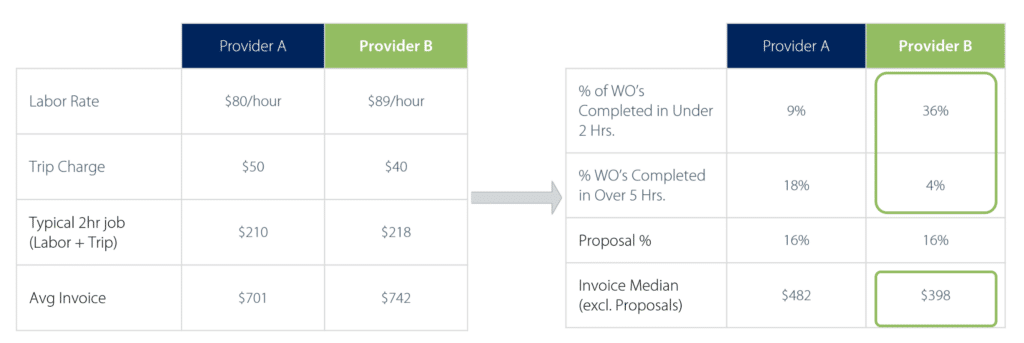
2. Check your “Network Opportunities” report monthly
Your Network Opportunities page shows where your weak spots are and exactly how much you could improve. With data-driven insights, you don’t have to research or crunch the numbers yourself to discover when there may be more cost-effective, responsive providers.

Use Provider Search* to easily browse your network categories and compare your providers against thousands of similar pros nationwide based on their actual performance from over 180 million work orders. Your top Network Opportunities will be shown there as well.
See Opportunities in Provider Search >
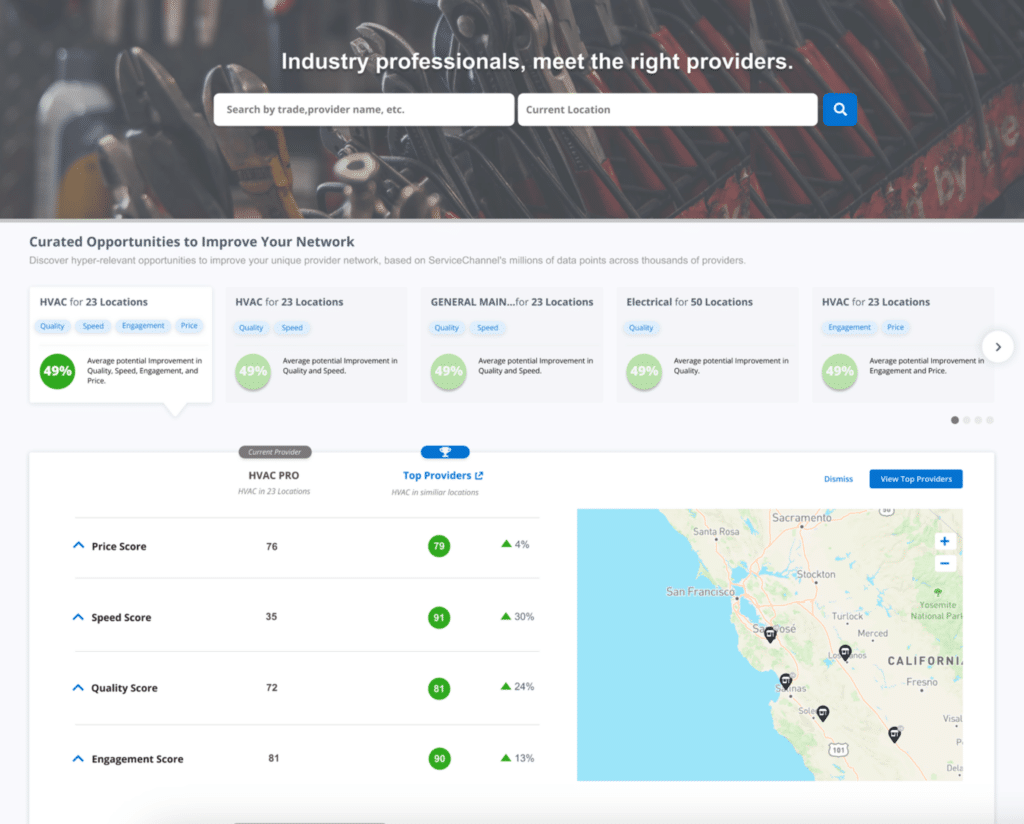
3. See provider strengths at-a-glance in Provider Search
To help you prioritize and choose the best provider available for your needs, you’ll see each provider’s strengths highlighted in your specific Provider Search results, based on:
- Historic Performance: Top-ranked providers across Price, Engagement, Quality, and Speed
- Trade & Industry: Providers that match your unique profile best
- Service Area: Local, National
- Delivery Model: Broker, Self-performer
- Other: Diverse Business and more
See Strengths in Provider Search >
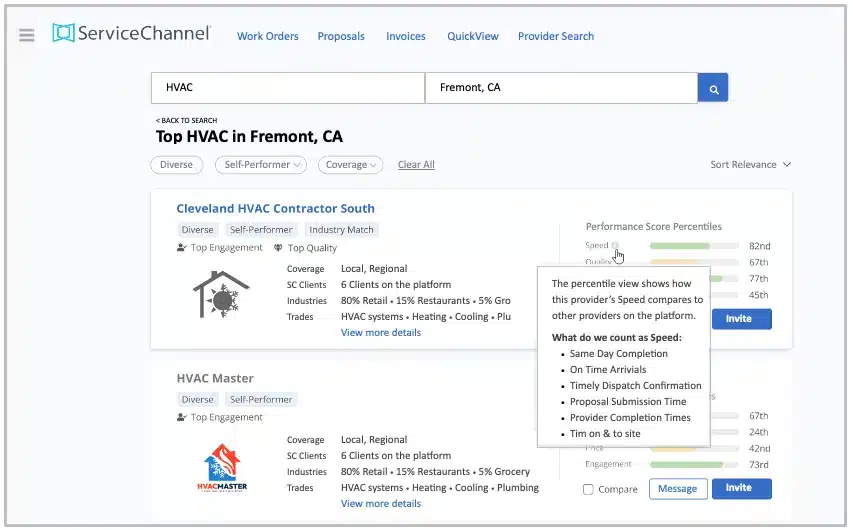
4. Evaluate both the performance and fit of potential providers
Take a holistic approach to select new providers with better long-term potential. This means looking at both quantitative data and qualitative experience over time.
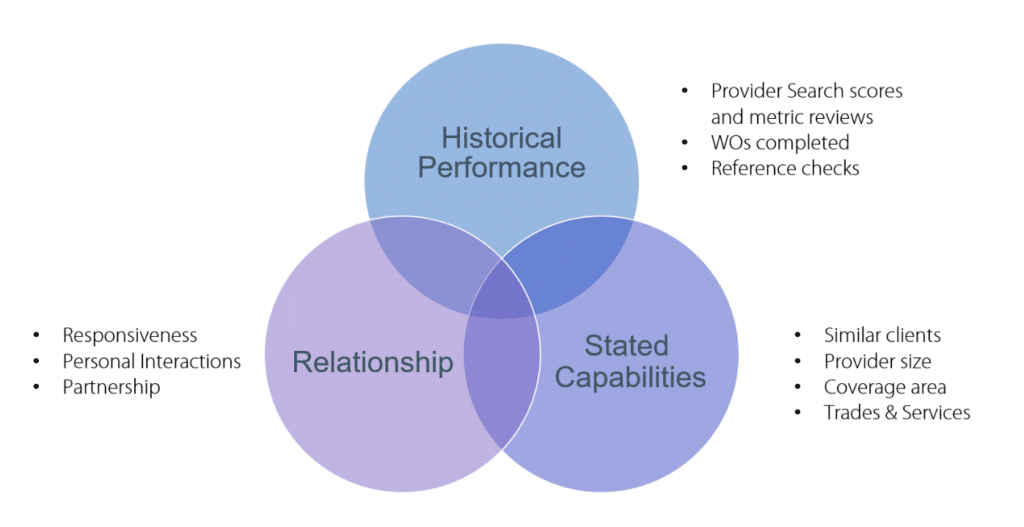
The provider’s profile on Provider Search gives you insights through an abundance of valuable information, including service coverage area (both stated and actual), specific trades and specialties, work order history and volume, detailed performance history on ServiceChannel, and verified business information.
5. Give your providers an onboarding “cheat sheet”
It’s important to establish a good process and translate your organization’s full needs and process into an easy-to-read onboarding document. Set clear expectations up front to minimize challenges later and bring them up to speed quickly. A good onboarding guide answers common questions, such as:
- How to respond to jobs
- Who to talk to when they arrive onsite
- Performance expectations
- Expected speed of response
- Dress code
- Alternative contacts
A clear onboarding document eliminates repetitive conversations with providers and sets good habits from the beginning. It also makes it easier for new providers to complete compliance requirements, so they can get to work for you more quickly.
Download Onboarding Template >
Note: You may have to disable browser blockers to access the template.

6. Run pilots and reward great service with more work
A powerful new “pilot” feature coming in November automates the trial process. Easily add new providers temporarily, without changing your existing assignments. This allows you to ensure they deliver better service and meet your performance standards before you decide to rank them as your primary provider.
Just set the number of work orders the new provider should receive during the pilot (we recommend a minimum of 10 work orders within 3 months). They’ll be automatically assigned during that period, so you don’t need to manually change your assignments before and after each test.
It’s a best practice to have at least 2 emergency back-ups with proven experience who can be ready to step in when you need them. If they significantly outperform your incumbent, promote them. This encourages better performance across your network.
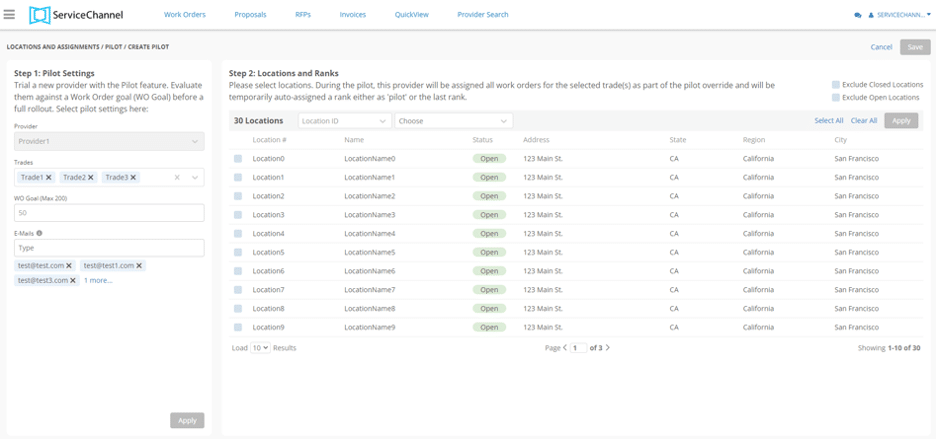
You can also assign work orders right on the Locations & Provider Assignments page for on-the-fly network optimization. This makes it easier than ever to replace underperforming providers with providers that prove they can deliver you better service at a lower cost.
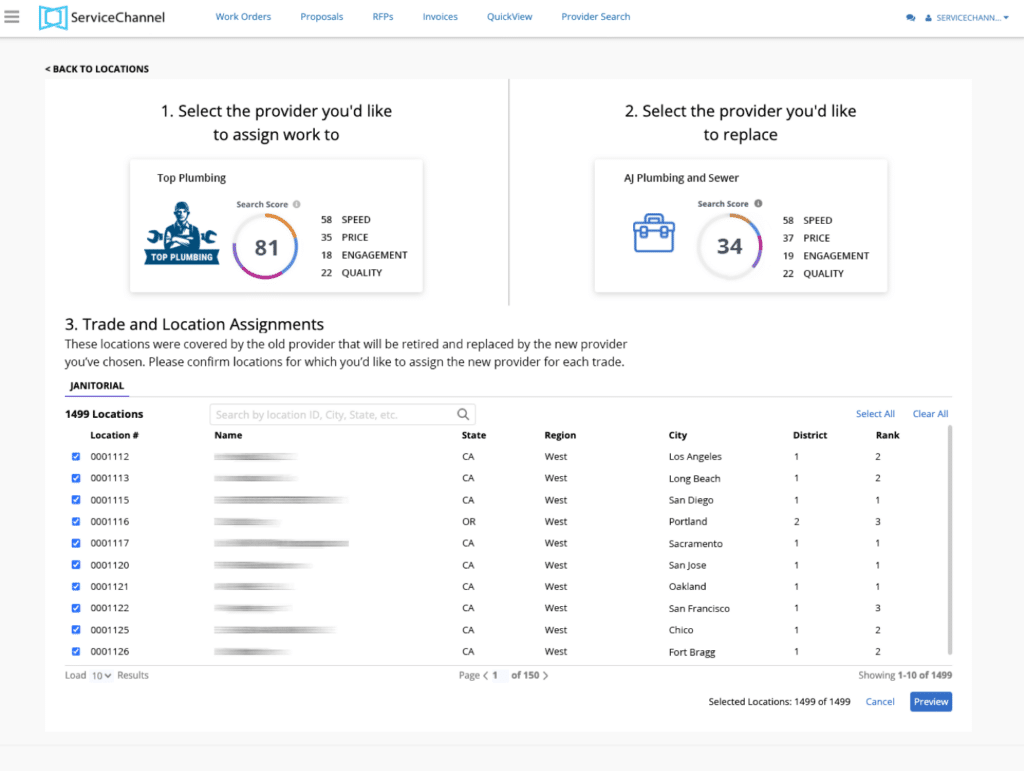
7. Deepen your bench using proven expansion strategies
Identify additional assignment opportunities to win a provider over during recruiting and double-down on connections that are working well. Consider how you can give high-performing providers even more opportunities, such as additional locations, trades, or special projects.
Add secondary trades
- Get support from providers in their non-core trades
- Enable back-ups as needed, but keep both providers primary in their key areas of expertise
Overlap regions
- Get support from providers in their peripheral geography
- Enable back-ups as needed, but keep both providers primary in their core geography
Add national providers
- Get back-up from a “known provider” when required
- Ensure they are a primary in at least some locations
Your Contractor Scorecard displays key metrics on service quality, speed, price, engagement, and more to help you identify top performers.*
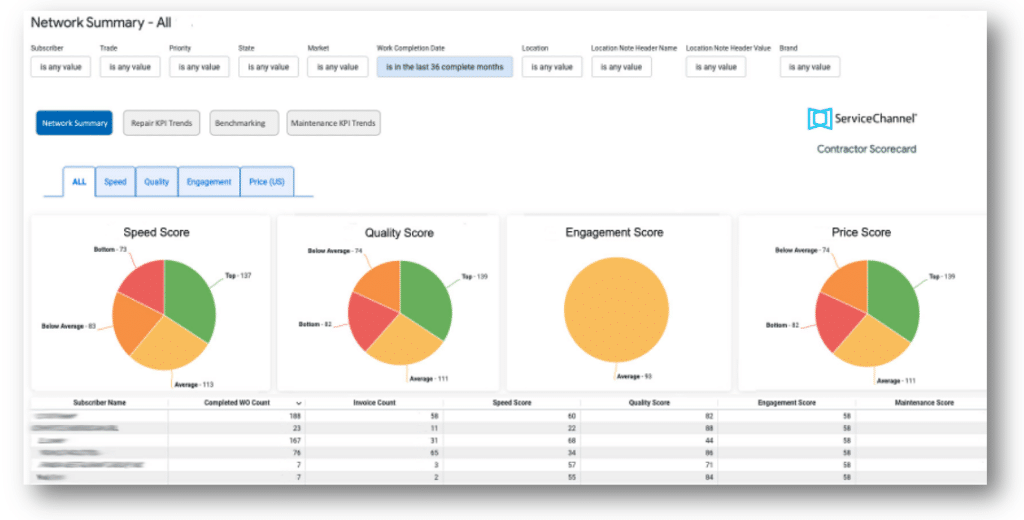
Through the Benchmarking tab in your Contractor Scorecard, you can measure and compare existing providers in your network, in addition to benchmarking against the entire marketplace.
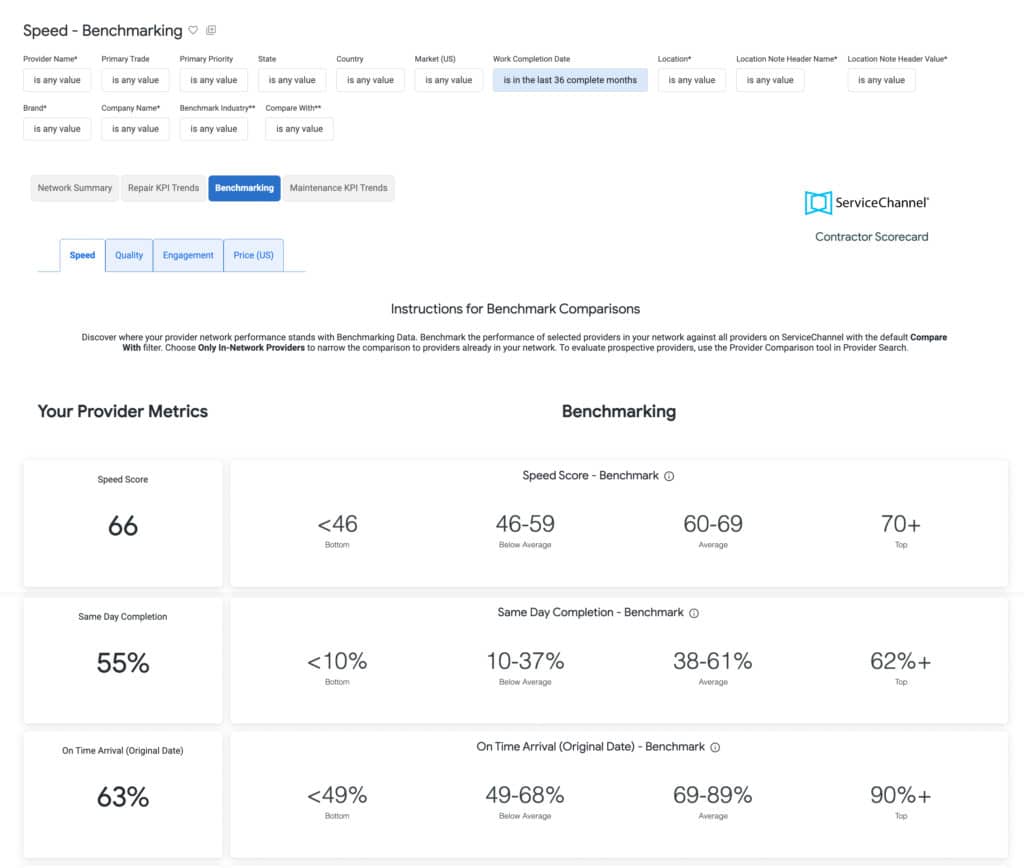
Learn more about how to build and maintain a rock-solid network of providers:
* Provider Search will only be visible if the feature is enabled in your account. Price Scores are only available for provider work performed in the U.S.



